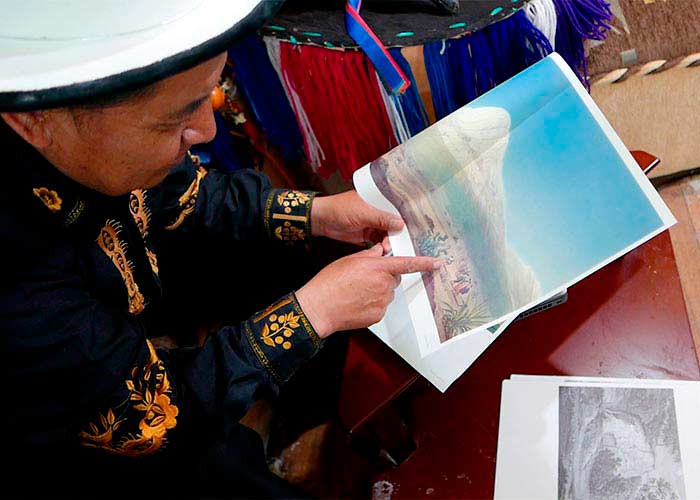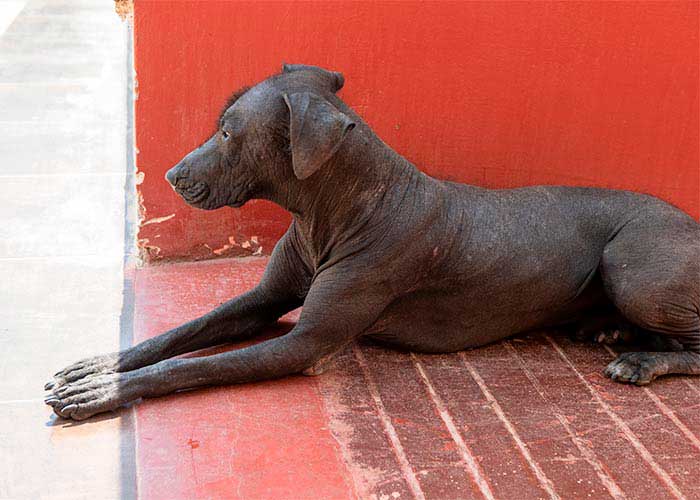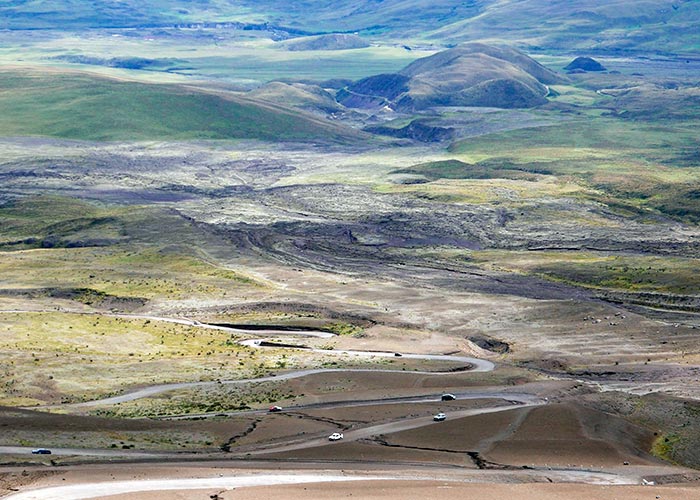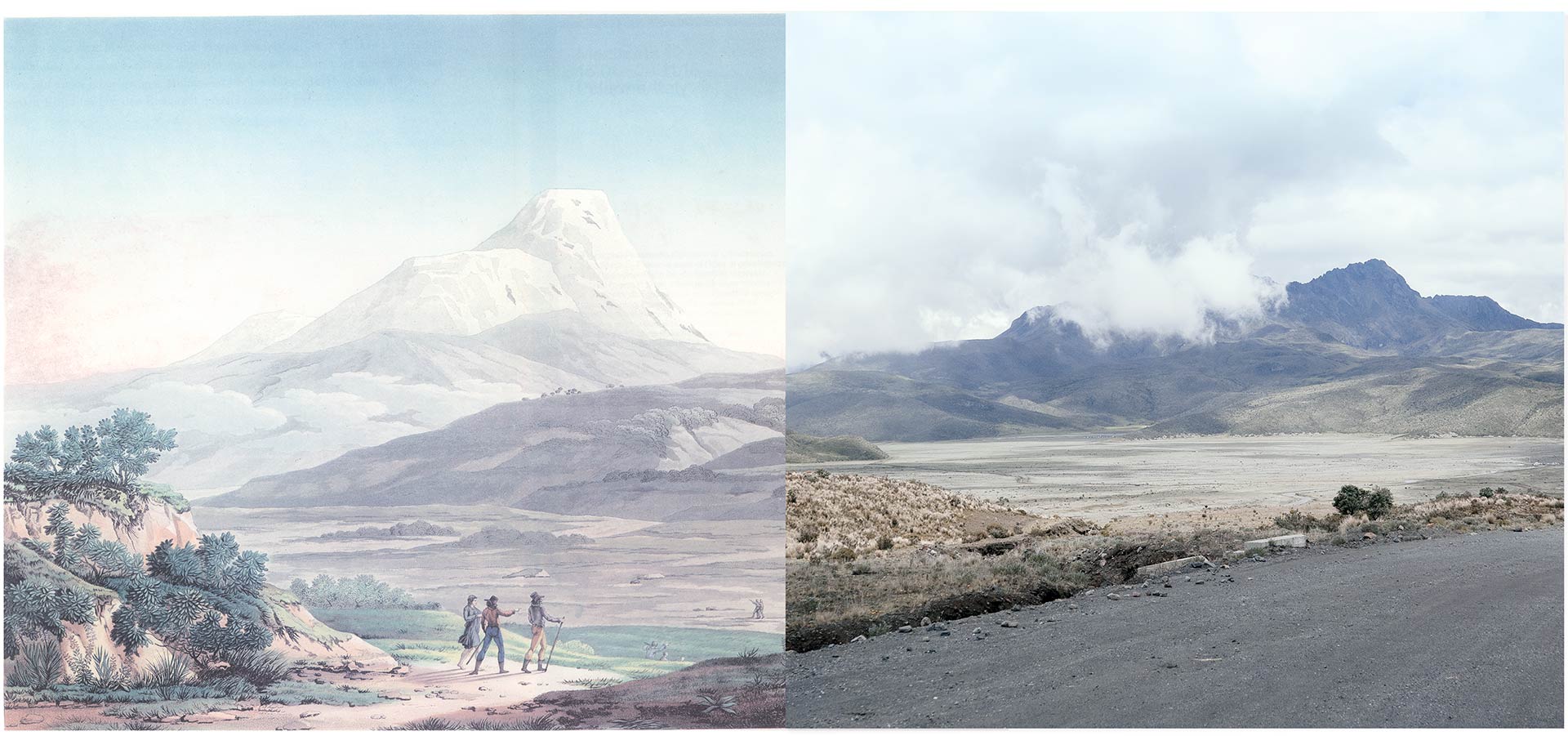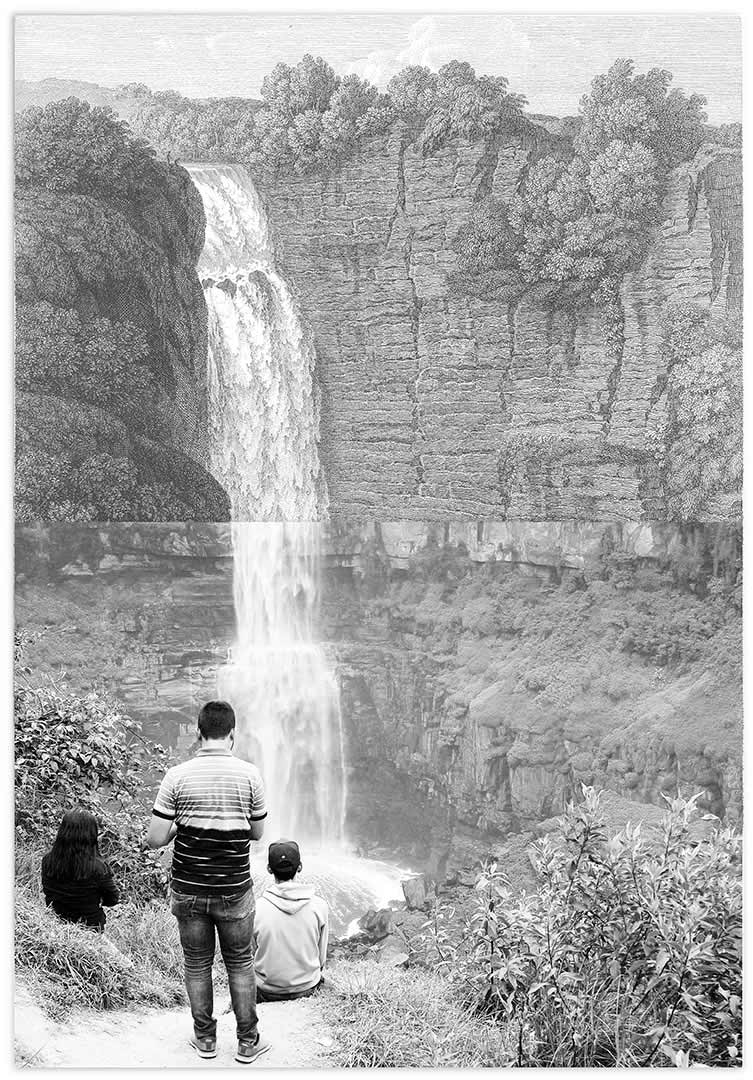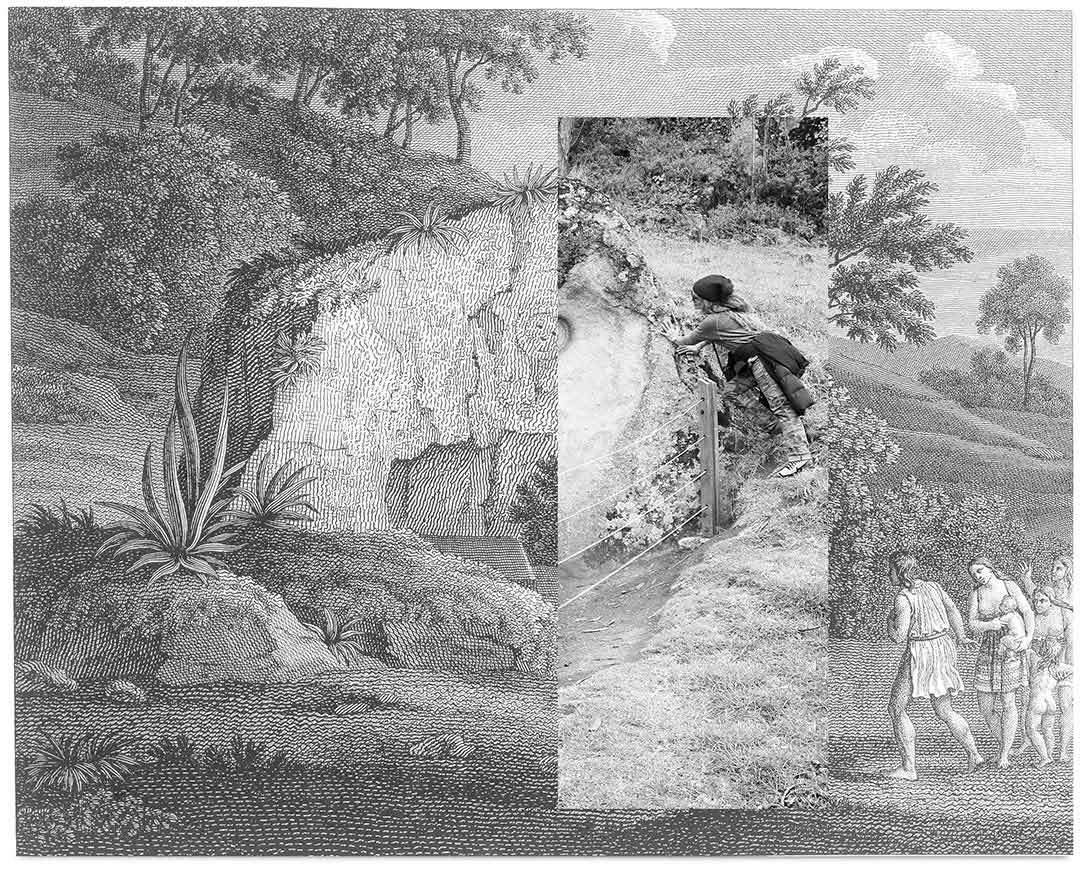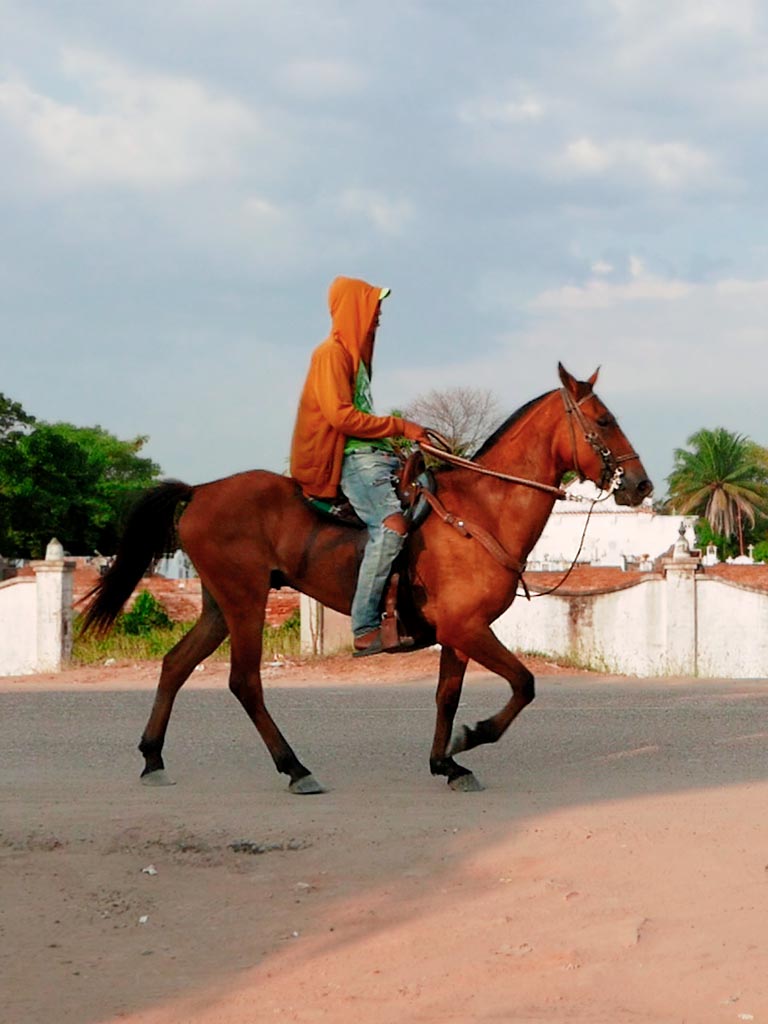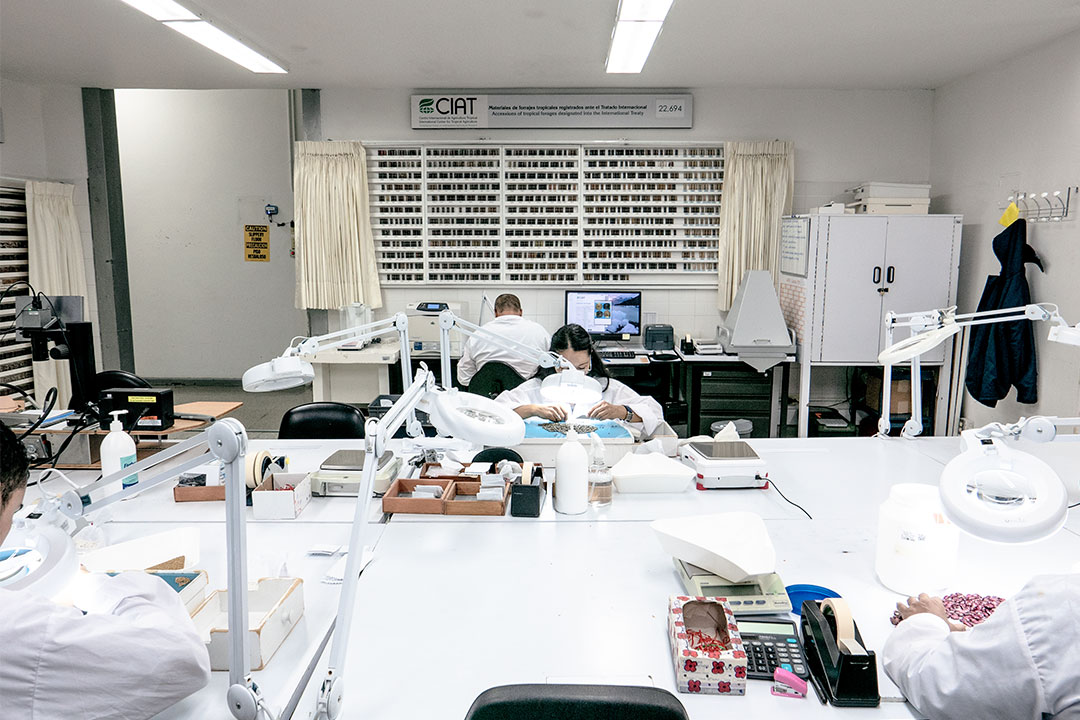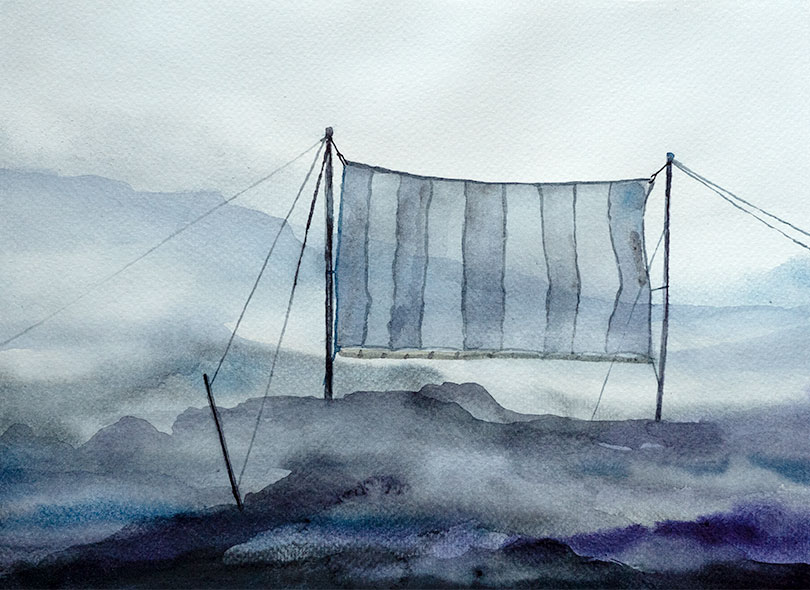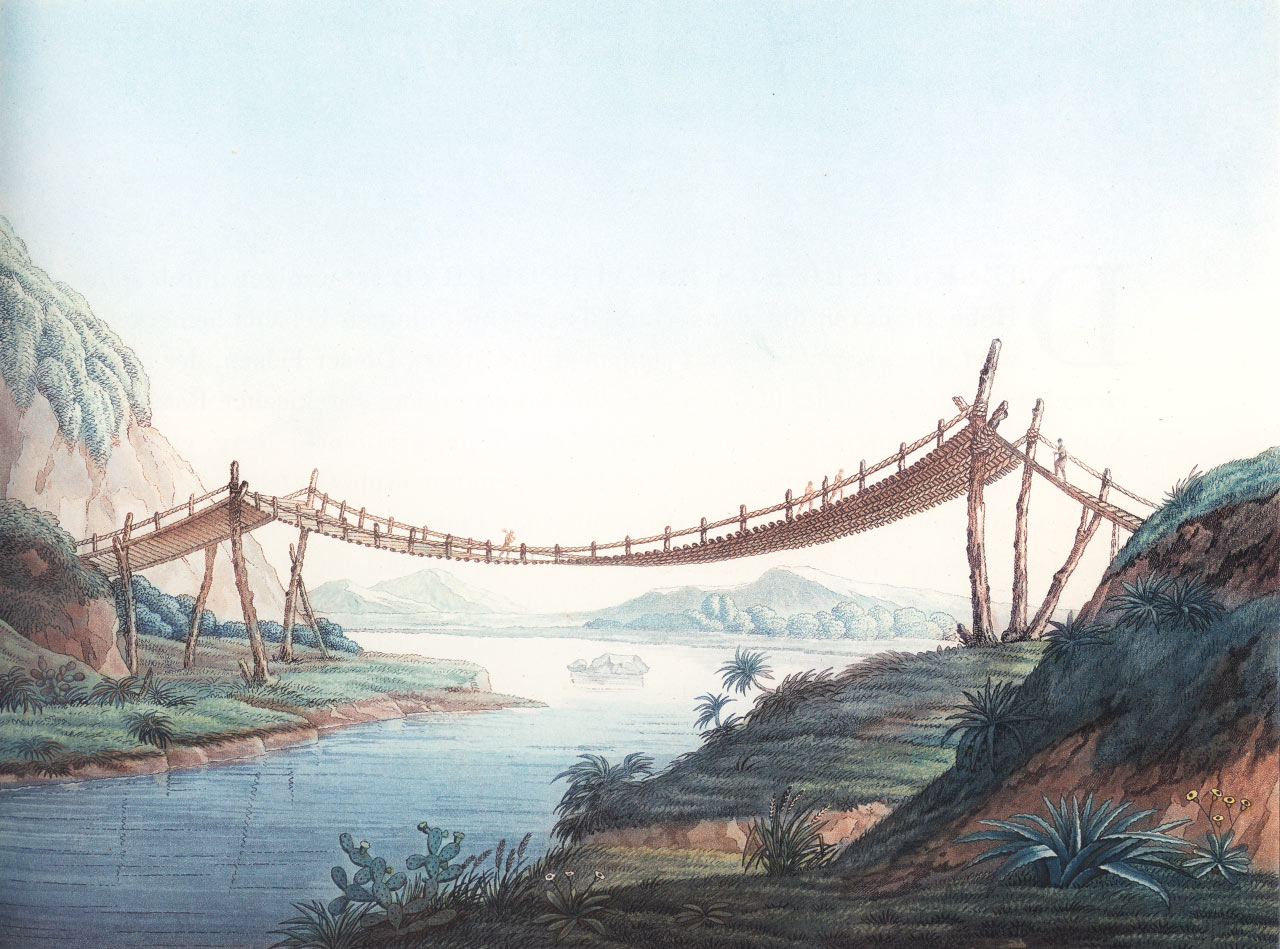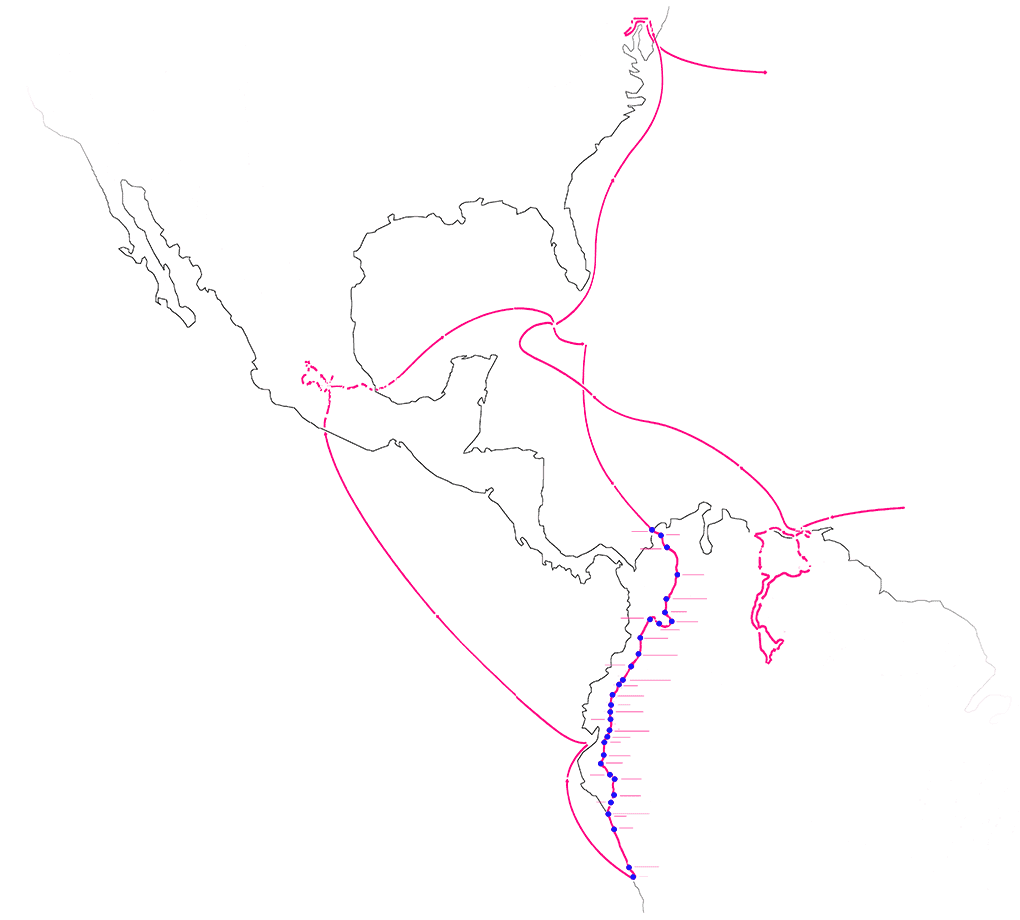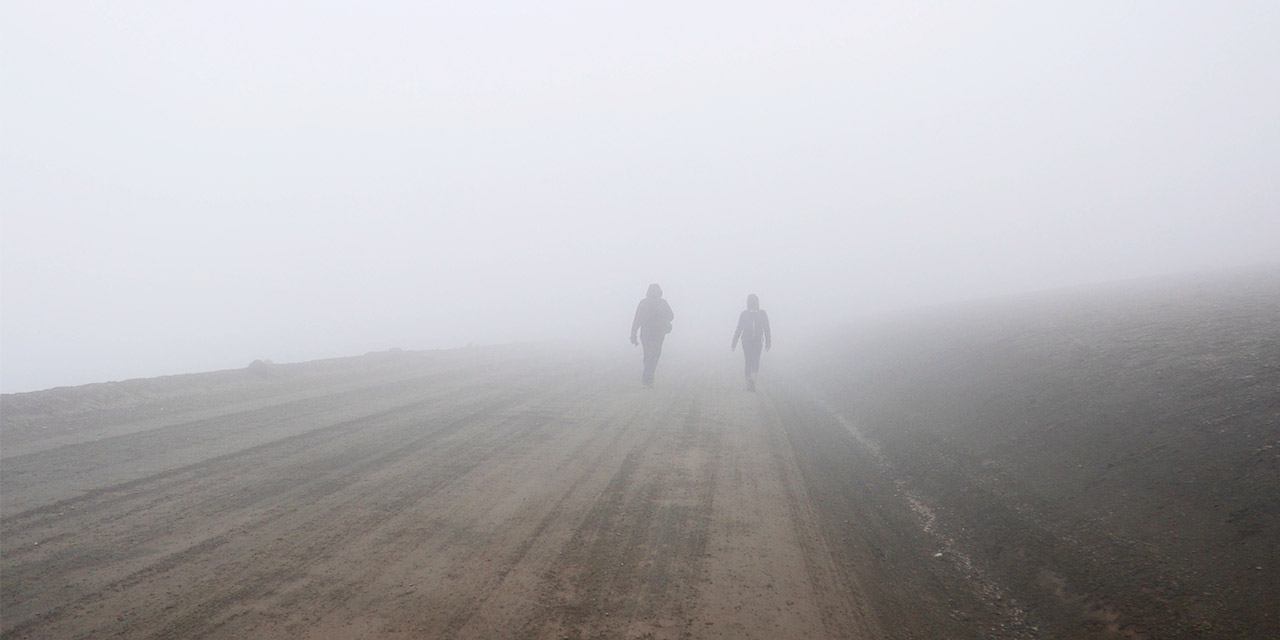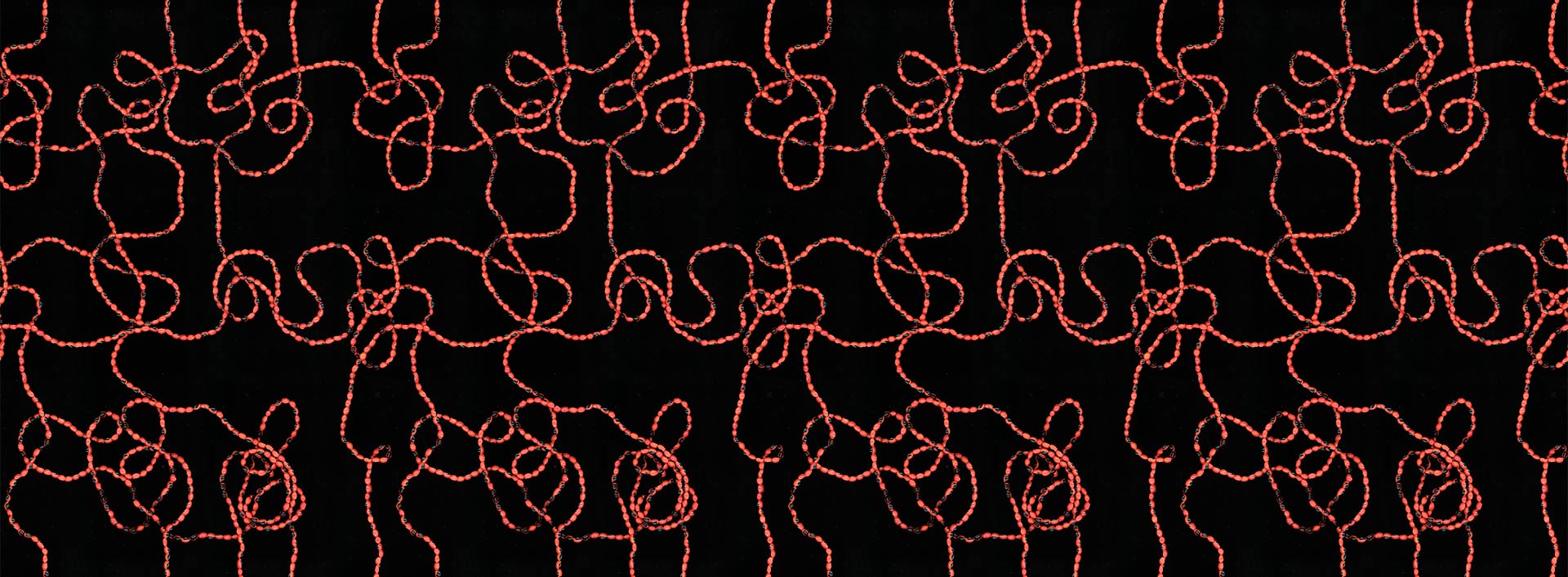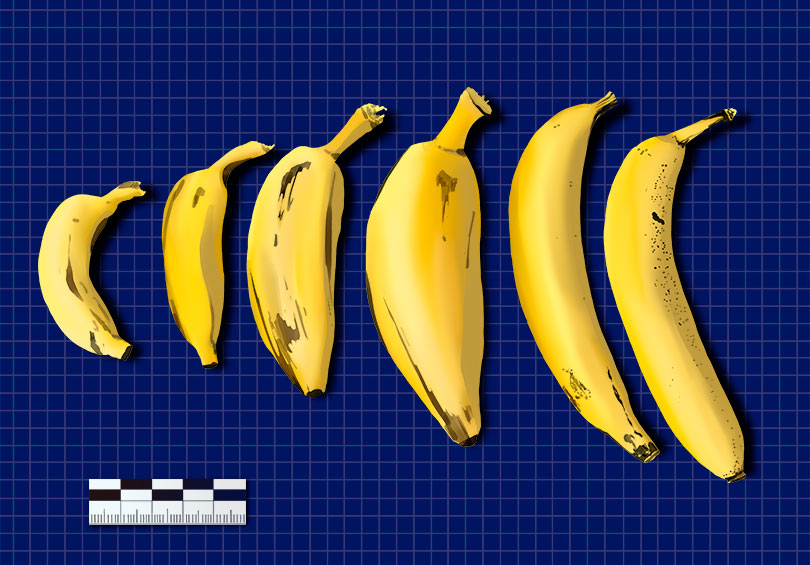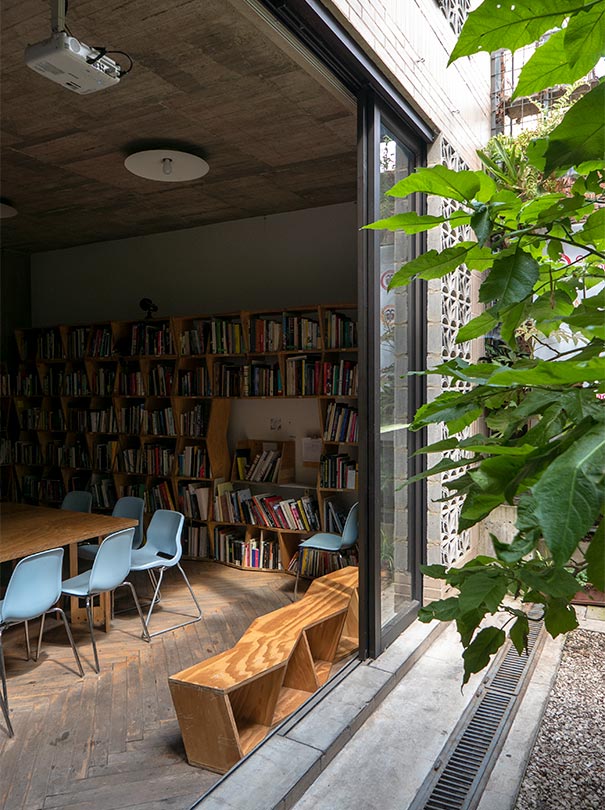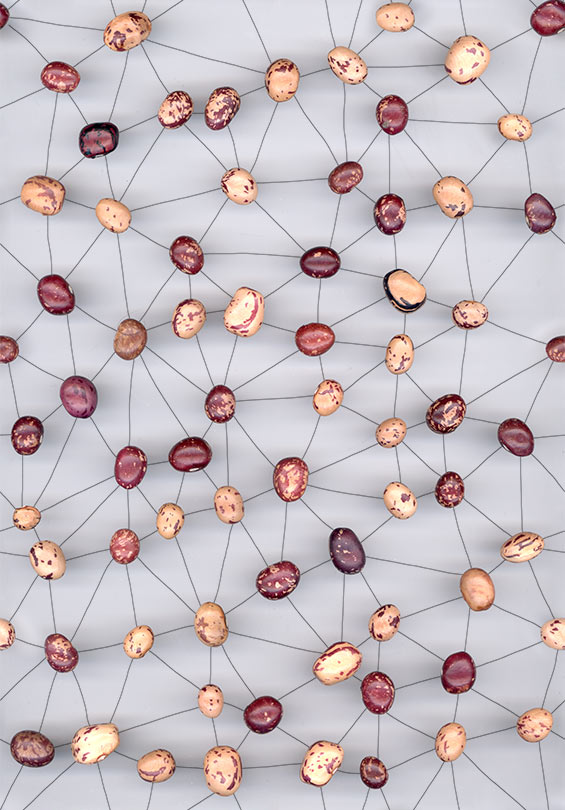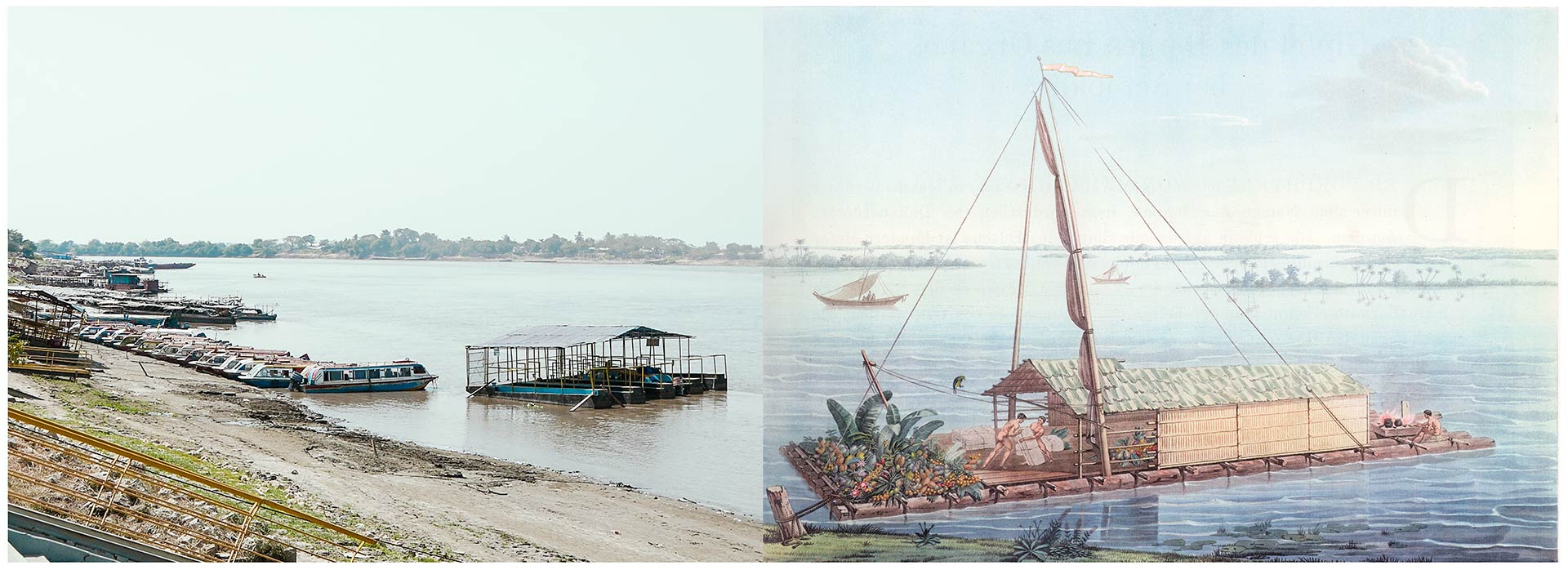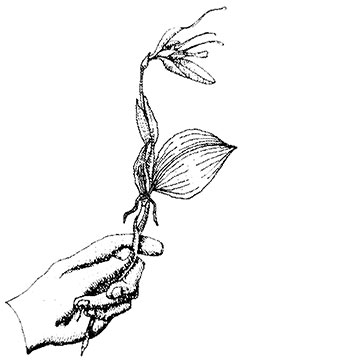
Unfinished histories
is an artistic research project
by Alexander Glandien, who investigates postcolonial structures in Latin-America.
The artist retravels the exact route through South and Central America that the explorer and botanist Alexander von Humboldt took
200 years before.
Chimboraza
collage | 40 x 30 cm

The expedition of Alexander von Humboldt to South America (1799 – 1804) is considered to be one of the most significant research expeditions of modern times, showing its traces not only in current debates on the colonial heritage of Europe, but also in a diverse debate about Humboldt‘s person in Latin America itself. Following the ideas of the Enlightenment, Humboldt‘s journey created an unknown awareness for America and he tried to create a differentiated and open view on foreign cultures. But Humboldt's adventures of gathering knowledge, surveying and mapping territories, were also used as an instrument of colonial domination.
This inherent ambivalence of scientific expeditions is the starting point for my long-term research project „Unfinished histories“. More than 200 years after Humboldt, I started retraveling South America on the exact same route, visited the same places and reworked, corrected and amended his observations from a contemporary perspective. This project on Europe‘s colonial heritage is accompanied by various dialogues and collaborations with Latin American artists and scientists, searching for a joint analysis of postcolonial perspectives.
However, enlightenment and progress can not be thought of without oppression, colonialism, racism and environmental destruction.
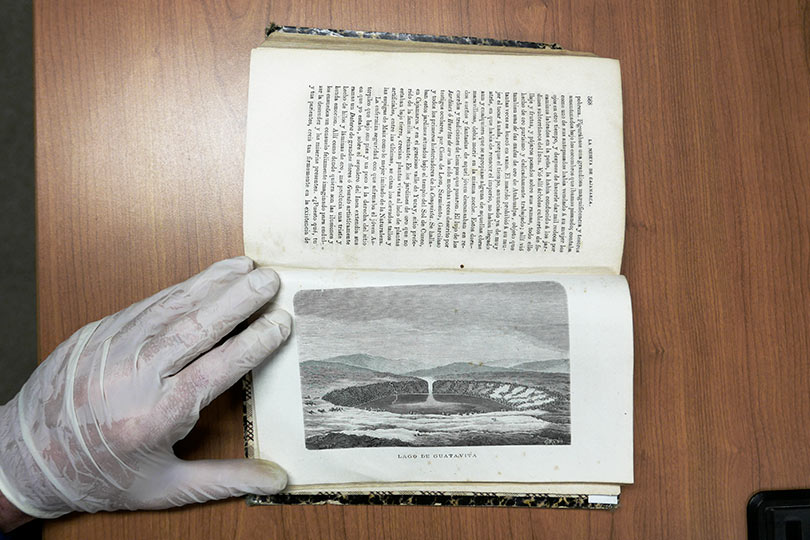
Research at Luis Ángel Arango library in Bogota

Unfinished histories
is an artistic research project
by Alexander Glandien, who investigates postcolonial structures in Latin-America.
The artist retravels the exact route through South and Central America that the explorer and botanist Alexander von Humboldt took
200 years before.

Chimboraza
collage | 40 x 30 cm
The expedition of Alexander von Humboldt to South America (1799 – 1804) is considered to be one of the most significant research expeditions of modern times, showing its traces not only in current debates on the colonial heritage of Europe, but also in a diverse debate about Humboldt‘s person in Latin America itself. Following the ideas of the Enlightenment, Humboldt‘s journey created an unknown awareness for America and he tried to create a differentiated and open view on foreign cultures. But Humboldt's adventures of gathering knowledge, surveying and mapping territories, were also used as an instrument of colonial domination.
However, enlightenment and progress can not be thought of without oppression, colonialism, racism and environmental destruction.
This inherent ambivalence of scientific expeditions is the starting point for my long-term research project „Unfinished histories“. More than 200 years after Humboldt, I started retraveling South America on the exact same route, visited the same places and reworked, corrected and amended his observations from a contemporary perspective. This project on Europe‘s colonial heritage is accompanied by various dialogues and collaborations with Latin American artists and scientists, searching for a joint analysis of postcolonial perspectives.

Research at Luis Ángel Arango library in Bogota

